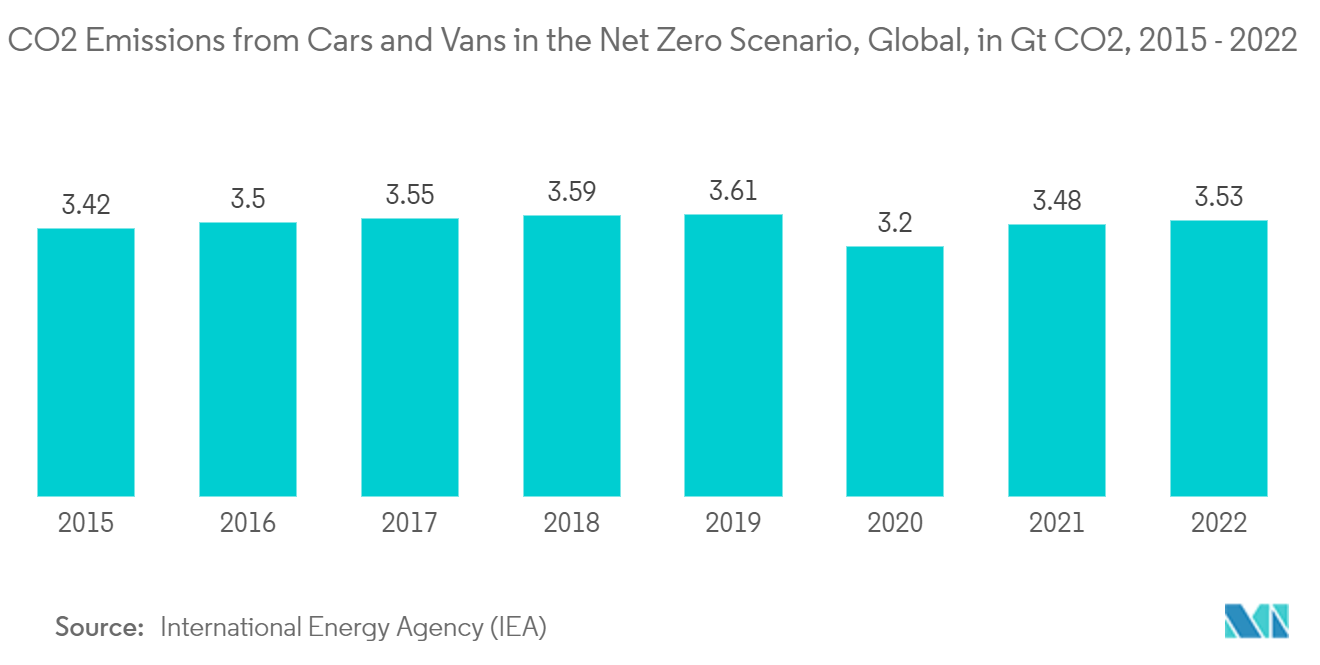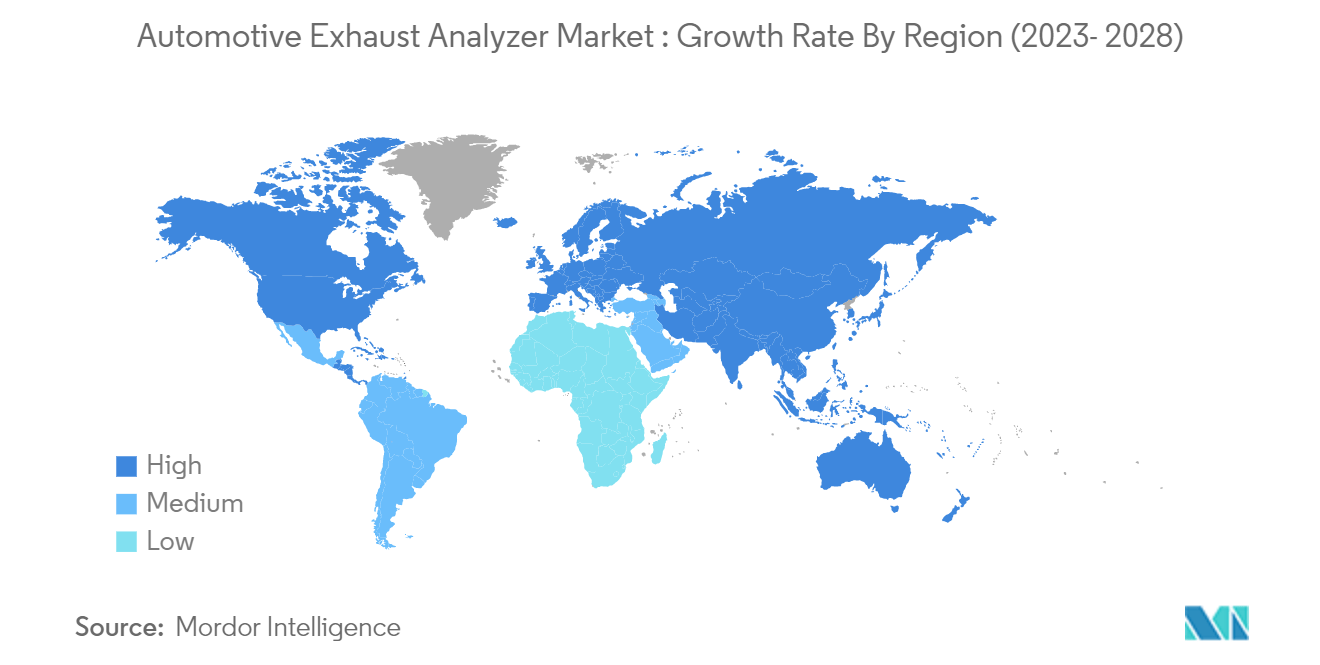Market Trends of Automotive Exhaust Analyzer Industry
Changing Rules and Regulation Will Help the growth of the passenger car segment of the market
- With the introduction of new emission standards worldwide, such as Euro 6, Bharat 6, China 6, US Environment Protection Agency (EPA) norms, and many others, the demand for exhaust analyzers has increased and will continue to grow during the forecasted period. The automobile industry is highly dependent on EPA regulations, owing to the high emissions of the automotive units.
- The move by the EPA to raise the miles per gallon (mpg) standards to 54.5 mpg by the year 2025 signifies a significant effort to improve fuel efficiency and reduce vehicle emissions in the United States. This decision aims to set a higher performance benchmark for vehicles, encouraging automobile manufacturers to develop more environmentally friendly and economical cars.
- In Europe, there is a new energy efficiency goal that builds upon a previous requirement established in 2020. According to this requirement, newly registered light-duty vehicles (LDVs) are subject to a maximum of 95 grams of CO2 emissions per kilometer (95g CO2/KM). This limit is applicable to both gasoline-powered vehicles, which should achieve a fuel consumption rate of approximately 4.1 liters per 100 kilometers (4.1 L/100 Km), and diesel vehicles, which must attain a consumption rate of around 3.6 liters per 100 kilometers (3.6 L/100 Km) under the worldwide harmonized light vehicles test cycle (WLTC) test.
- As for the European Union's ambitious targets for CO2 emission reduction, they have set a goal to decrease emissions by 37.5% for cars and 31% for light commercial vehicles by the year 2030. This objective reflects the EU's commitment to combatting climate change and promoting sustainable practices in the automotive sector.
- The introduction of real driving emission testing in Europe, the United States, India, and many other countries is the first step toward improving vehicle testing standards. As part of further development of the real driving emission test procedure, legislation is working on ensuring that on-road testing applies not only to prototype vehicles, as is the case today, but also to production vehicles randomly selected for in-service conformity testing. A broad market surveillance program for on-road emission levels of new automobiles includes third parties, in addition to type-approval authorities, to ensure independent findings.
- This has opened the market for the automotive exhaust analyzer market all around the world. The iridium-50 gas sensor system is the most preferred type in the market. On-board systems are growing at a fast rate due to recent regulations on emission checking.
- Advancements in sensors, rising automotive production, and evaluation of prototypes in vehicles are some of the factors responsible for growth in this market. The passenger car segment is expected to dominate the market. Increasing automobile sales is expected to have a direct impact on the increase in demand for exhaust analyzers, especially for passenger car segment of the market.

Europe Is Expected to Be the Leading Market
- Germany has a major presence of automotive component manufacturers with advanced research and development facilities to develop automotive exhaust analyzer sensors, which will likely create a lucrative opportunity for the market during the forecast period.
- Other leading importers of German-manufactured vehicles are in North and South America. In March 2023, the German Federal Motor Vehicle Office (German: Kraftfahrt-Bundesamt (KBA)) announced that new passenger car registrations in February increased by 2.8% over the previous year to 206,210 units.
- Leading German automotive manufacturers Volkswagen, Daimler AG, and BMW are expecting to see higher growth during the forecasted period after the slow growth in 2020. Germany ranked 1st in the world for car exports. This region has also seen raising consultancies that help cars or motorcycles qualify for approval from regulatory bodies.
- As German auto manufacturers export automobiles worldwide, these consultancies help them keep a check on regulations. They perform emissions and fuel consumption tests, determining whether the vehicles comply with national and international laws.
- The German government has also planned to decarbonize all the sectors by 2050 to eliminate fossil fuel usage, which will have a positive impact on this market, which implies more stringent regulations on emission standards, which will be monitored through the real driving emission testing program which is expected to help the automotive exhaust analyzer market grow during the forecasted period.


